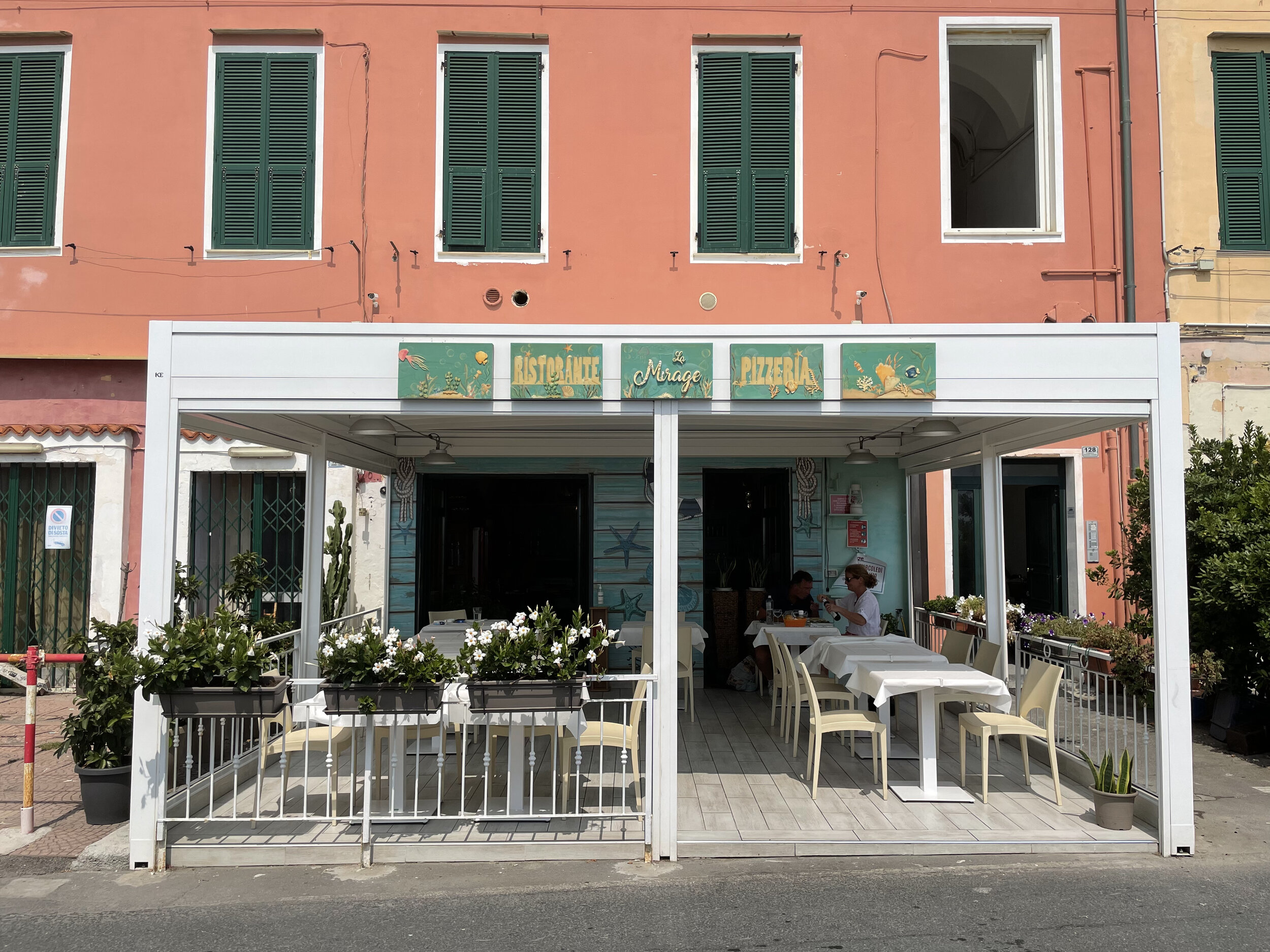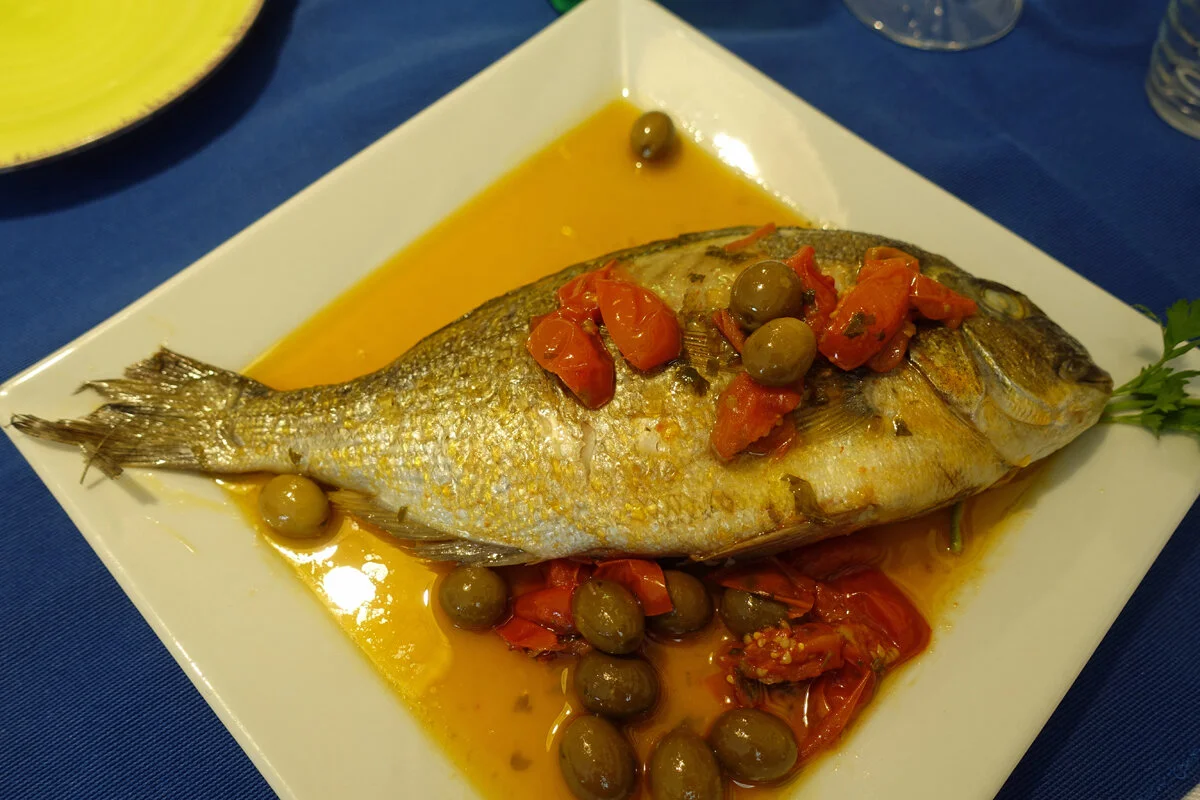Porto Maurizio
I found a small and cheap camping just a few hundred meters from the beach in Porto Maurizio, which is part of the city Imperia. The city was created by Benito Mussolini on 21 October 1923 by combining Porto Maurizio and Oneglia and the surrounding village communes. Porto Maurizio can be reached by the Autostrada dei Fiori (A10) which is elevated high above the coastline.
Eating out when alone is always a bit of a challenge. In Sanremo I was flatly refused a table because I was alone. In Porto Maurizio the waiter of the first place I tried looked at me, our eyes met, I looked at quite a few empty tables, then he said everything was reserved. I had doubts. Another place named La Mirage, didn’t seem to mind a solitary guest. It turned out in all its simplicity this was an excellent choice.
I had noticed mussels were on the menu everywhere in Liguria, and I went for the impepata di cozze and a salad consisting of just one big sliced tomato. I had to try the trenette con pesto, fagiolini e patate because I had made this recipe at home a few years ago.
Impepata di cozze. Black peppered mussels.
Trenette con pesto, fagiolini e patate.
“O my soul, do not aspire to immortal life, but exhaust the limits of the possible.”
The first problem in philosophy is suicide, Albert Camus argues in the Myth of Sisyphus. The question whether life is worth living must be answered first. “All the rest— whether or not the world has three dimensions, whether the mind has nine or twelve categories—comes afterwards.”
I've often wondered why Anthony Bourdain answered that important question with ‘no’ one day. Camus: “It is always easy to be logical. It is almost impossible to be logical to the bitter end.”
Bourdain in Monopoli, Apulia. 'Parts Unknown', Southern Italy. Season 10, episode 9 (2017).
Piazza Chiesa Vecchia
The hottest time of day is best spent on the old church square. The trees give some shade and its high elevation provides a cooling breeze. The people really love their plants. Potted plants are everywhere.
Few things are better than taking a swim just before aperitivo. Writing on a September morning in Amsterdam it is hard to reimagine the 30 degrees temperature when looking at the photo’s.
Camping De Wijnstok. Strada Comunale Poggi, 2, 18100 Imperia IM. Despite the Dutch name nobody spoke Dutch and my neighbours were Italian. For 13 euro a night quite cheap considering the close proximity to the beach.
On the last morning I walked to the beach for a final swim in the Ligurian Sea just after sunrise. I didn’t want to go home. Posso stare in paradiso?






























































































































































